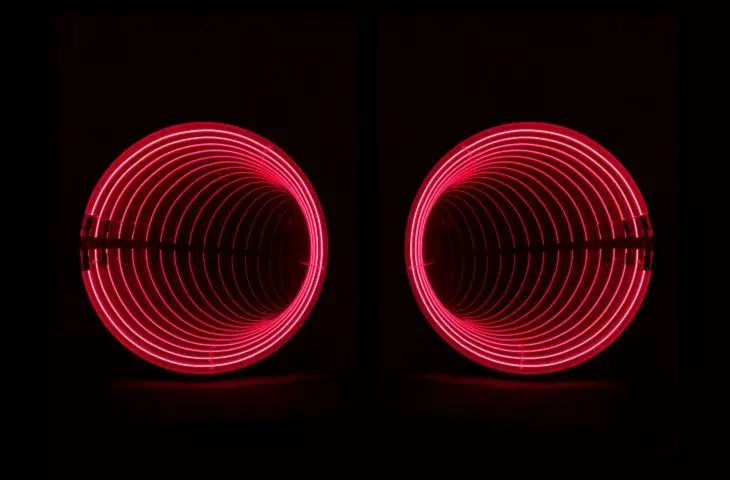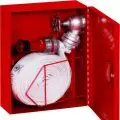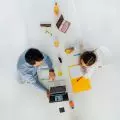Anna: In your opinion, what are the best implementations in this field?
Kama: When it comes to designing light in architecture, these are the realizations of the company I worked for in New York - L'Observatoire International. They really are great. The company was founded by a Frenchman, Hervé Descottes, who has lived in New York for more than twenty-five years, and that's where he started his business. He works with the greatest architects.
Anna: And if you had to give a specific project?
Kama: One of the most interesting projects I worked on with them was the design of author's lamps - in collaboration with my boss Richard Meier and his daughter Ana Meier. At the time they were founding Richard Meier Light, I was the main product designer there while working on the first line of "Places" lamps. I also had the opportunity to work on some fantastic architectural projects: Mori Tower in Japan with OMA, the redevelopment of Rockefeller Center with Citterio-Viel or 50 Hudson Yards with Foster + Partners. We also competed in a great competition, Illuminated River, with Diller Scofidio + Renfro for the lighting of bridges in London. We had to develop a concept for the illumination of all the bridges over the Thames. Unfortunately, we didn't win it.
Anna: You are a very young person. How did you manage to achieve so much at such a young age?
Kama: It's hard to say. During my studies I worked as a research assistant for one of my professors - Derek Porter. And then another professor invited me for a job interview (at L'Observatoire International) and I got it. I started working right out of school. Now I'm back in Poland, I've opened my studio - aureola.studio, which deals with light design.
Anna: Do you have competition?
Kama: In our country, the topic of light design is just in its infancy. There are people who do it, but they usually work for specific companies that sell lighting products. It seems to me that this is a bit limiting, you don't start from a concept then, but from a product.
Anna: What is the scope of your business?
Kama: We carry out various projects. We work for individuals and institutions. Now we are working with two museums. One of them is the Planeta LEM Center for Literature and Language in Krakow. We have already realized, among others, a spa, a bar called Zagrywki in Warsaw, or residential projects - spaces with different profiles. We design light, lamps and light installations. In fact, everything related to lighting.
{Image@url=https://cdn.architekturaibiznes.pl/upload/galerie/56059/images/original/1c16f9c32beceb2e9654aa3575a615ee.jpg,alt=butik Hermes, Warsaw,title=boutique Hermes, Warsaw}
Hermes boutique, Warsaw
proj.: Mai-Ama Diouf (lead designer), David Debrinay, Idriss Benkheira (lighting), Anna Szczęsny (design), Pola Szepelowska (technical consultation), Joanna Strzelecka (project manager), Kama Wybieralska (lighting) event accompanying the opening; five spaces completely different from each other were built in the European Hotel for the duration of the event;
each room has a completely different character and light allowing you to sink into the spaces
photo: Pion
Anna: Do you think Poland is a good market for you?
Kama: When I returned from the States, many friends warned me that my idea was not the best one. They suggested re-branding, suggesting that I wouldn't find customers in Poland. Fortunately, it turned out that they were wrong. I think more and more people want to stay in spaces where they feel comfortable. More and more people are aware that this is also influenced by light. I definitely can't complain about a lack of work.
Anna: And the pandemic? Is it not an obstacle for you at the moment?
Kama: The pandemic has made us spend more time at home. Because of this, we pay much more attention to how our homes are decorated, furnished and what kind of light they have. The home is often also our place of work, so we have a need for differentiation of space, some kind of separation of these zones. Light is important here. I am thinking of such a home office lighting set.
Anna: Is there a project that is on your mind regardless of the pandemic?
Kama: Yes, I would very much like to create my line of lamps. I am working on prototypes.
Anna: What are the latest trends?
Kama: Trends are coming along with technological possibilities. One of the most important is electric light, which imitates daylight. This means that it changes color temperature during the day, just as it happens in nature. There are lamps that imitate this wandering of the sun during the day. This allows us to function closer to our natural cycle.
Anna: This is very interesting. I get the impression that nowadays designers try to imitate this natural world as much as possible, they refer to what is primordial, even though it somehow contradicts their discipline. This is very interesting.
Kama: Yes, this is an important trend - a return to nature.
Anna: We seem to have this need.
Kama: We are so constructed that these natural references are closest to us.
Anna: In preparing for our conversation, I realized that every time I think about light, it has a metaphysical dimension for me. I wonder if you have the same.
Kama: I often have to bring natural light inside. I consider this very process of bringing the outside into the inside as something metaphysical. I use a great deal of artistic procedures in my work. I most like to imitate with materials and light the effects seen in nature. This is close to my heart. I have not yet had the opportunity to apply any philosophical treatise directly to the project. But maybe someday...
Anna: There is an essay called "Praise of Shadow" by Jun'ichirō Tanizaki.
Kama: I have read it.
Anna: In it, the author presents the shadow as a metaphor for ambiguity and transience. What is light a metaphor for for you?
Kama: The answer that comes to mind is: God, but for an atheist... Some kind of higher power, cyclicity, rhythm. I think there are a lot of references.
Anna: Thank you for the interview!
interviewed: Anna WALEWSKA
Illustrations provided courtesy of Kama Wybieralska.













































